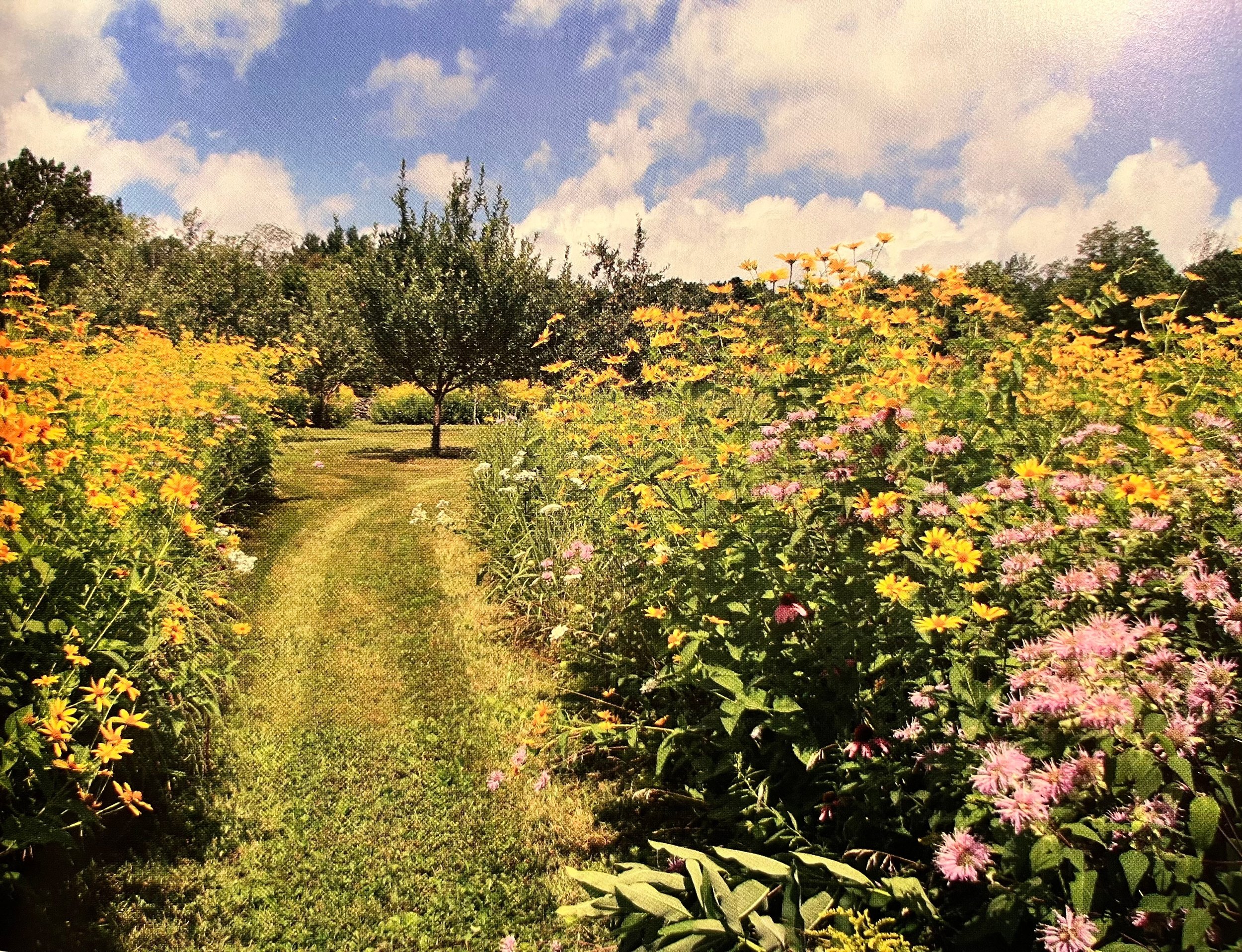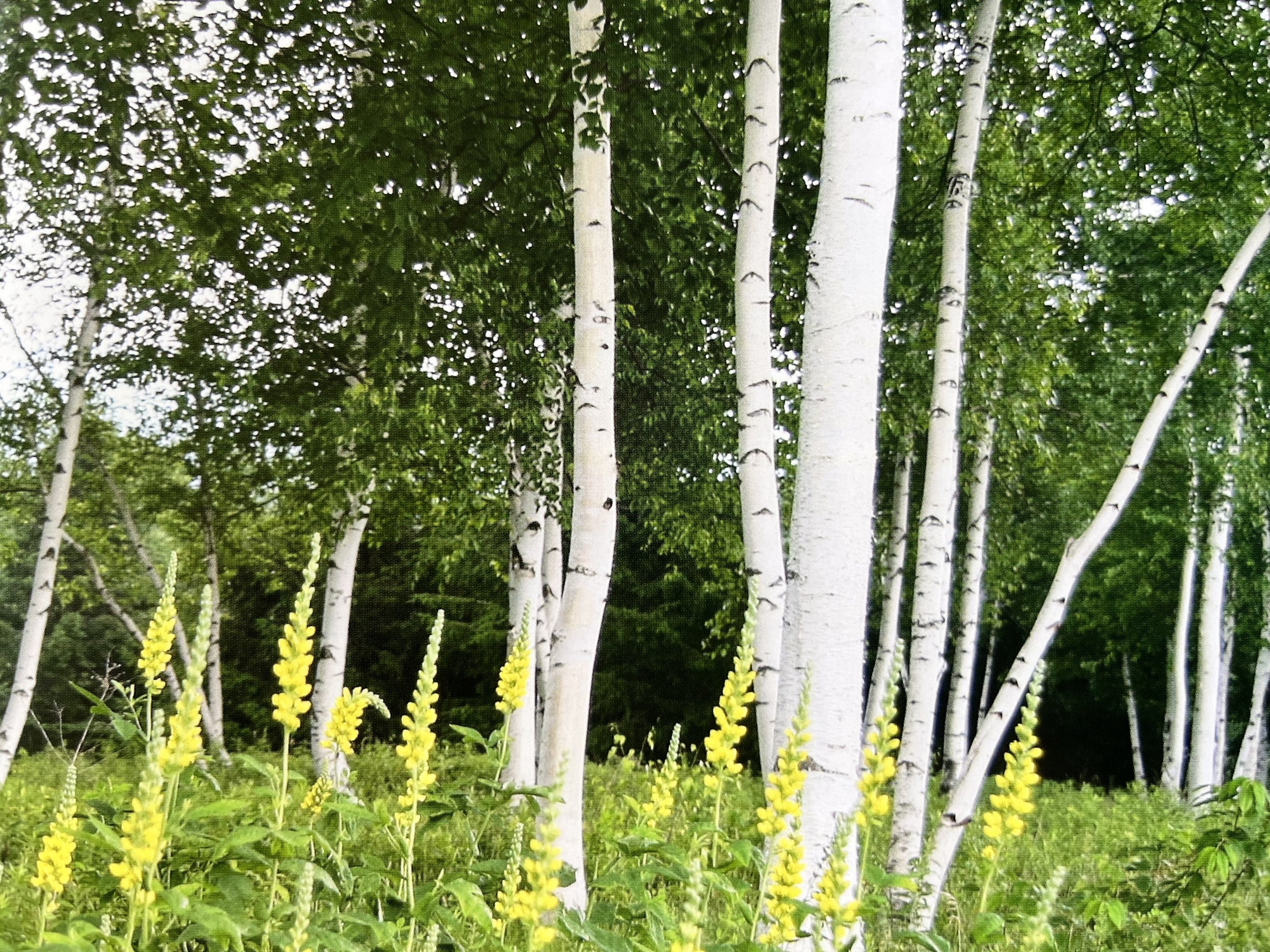Never Plant These 2 Easy Trees
Enhance vast yard with native trees in meadow instead.
Source: Garden Revolution by Larry Weaner
Dear Avant Gardener, What do you think of planting crape myrtle and rose of Sharon to add visual interest and shade to the vast lawn surrounding our home? My husband and I bought a two-acre lot and built a house about five years ago. The backyard is a huge expanse of lawn. We added two raised bed for our vegetable gardens. There are 56 bushes, many flowering around the house but nothing is planted in the yard. Six trees were planted – three near the house, two in the very front of the front yard (that are not doing well), and a flowering cherry tree at the very side of the yard. So you guessed it — the front yard is also a huge expanse of lawn! I have been thinking lately of adding some trees to the backyard for visual interest, to block some of the not very attractive woods at the very back of the yard, and add some shade. We do use the backyard to put kiddie pools up when the grandkids visit or set up corn hole or badminton. Crape Myrtles do very well here though I am not sure they are native. I don’t want to put in beds around the trees or bushes because we already have way too many beds to take care of. I have thought of planting some rose of Sharon bushes back there also because they take care of themselves. I would love some suggestions for what to do! — Curious in Cape May, New Jersey
Egads, please don’t plant crape myrtle or rose of Sharon. Both are listed in the Invasive Plant Atlas of the United States. They also happen to be my personal nemeses, aggressively fighting my efforts to eradicate them from my Florida and Rhode Island yards.
[Invasive plants are] non-native plant species that . . . degrade natural areas by displacing native plant communities, reducing light penetration, increasing ground level humidity, changing soil pH and chemistry, and altering hydrologic and fire regimes. The changes invasives bring can affect things like the amount and quality of food and nesting sites available for wildlife, the extent and survival of native plant populations, the quality and functions of wetlands and waterways, and the appearance and enjoyment of natural landscapes. — Invasive Plant Atlas
In fact, invasives are likely making your woods so dense. Cape May has more invasive plant species than any other county in New Jersey. Unfortunately, even in states like New Jersey with relevant legislation, nurseries continue to grow and sell many invasive species to unsuspecting consumers.
Trees love company
Your existing trees aren’t thriving probably because your soil became compacted during construction. In addition, your sparsely planted trees may be lonely; most trees evolved to grow together in a wood. That’s why I recommend that you plant trees in groups of three or more and including “pioneer species.” These fast-growing trees are the first to colonize disturbed sites.
For the back of your property, I love a group of gray birch (Betula populifolia). Other tree groups might include pussy willow (Salix discolor), another pioneer, plus a classic shade tree like red maple (Acer rubrum) and a flowering tree like Chickasaw plum (Prunus angustifolia var. angustifolia). These and the birch are all keystone species native to your area that host hundreds of native butterflies and moths. (See my column on how to pick, buy, site, and plant trees.)
Replacing lawn with meadow
You can further amp up the visual interest by transforming much of your lawn into native meadow before you plant trees. Leave grass for recreation and paths. Separate the recreation areas as far as possible with meandering paths between them. And make each grassy area a destination with a kiddie pool, raised beds, a bubbler for the birds, a badminton net, or a couple of Adirondack chairs.
Strategically site tree groups for shade and views from your windows. Leave a small area of soil covered with dead leaves around each tree for easy mowing. The meadow will act as “green mulch.” Include foxglove beardtongue (Penstemon digitalis) or other shade tolerant species that will thrive even as the tree canopy grows.
In the long run, a meadow with groups of native trees will be much easier to care for than your current lawn and beds – and much better for the environment. Most of the time and expense will be in planning and installation up front, plus some tending for a couple of years as the plants become established. All that’s required thereafter is an annual mowing in the spring.
The resulting ecological landscape will be far more beautiful than your lawn. And it will be alive with birds and butterflies that will delight the grandkids long after they outgrow the kiddie pool.
— The Avant Gardener
Why, How, Wow!
Why?
Creating an ecological garden will support birds in Cape May, a National Geographic top-ten worldwide birding destination. During spring and fall migrations, millions of birds funnel into the peninsula, especially raptors like the northern saw-whet, one of the smallest owls in the world.
Northern saw-whet owl (Nature Conservancy photo by by Megan Lorenz)
How
Grass is great for play and paths. Design tip: Push construction paper “grass recreation areas” around an enlarged image of your lot. Experiment with different angles and configurations until you are happy with it. Then plant natives everywhere else.
Wow!
The light-colored bark and verticality of native birches among wildflowers looks striking along a dense wood. Five trees planted in a zigzag about 10 feet apart would look great; more or a second row would look even better.
Source: Garden Revolution by Larry Weaner
Related Resources
Want to know how to plant a meadow? Get Lawns into Meadows: Growing a Regenerative Landscape.
Worried about lyme disease? Learn how attracting diverse wildlife, especially predators like owls, reduces lyme disease risk.
Looking for plants that support wildlife in your zip code? Try the National Wildlife Foundation’s Native Plant Finder.





